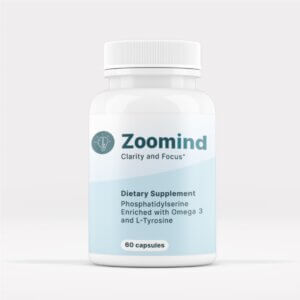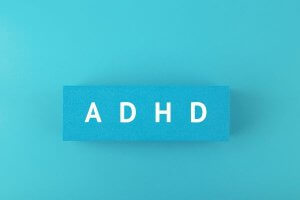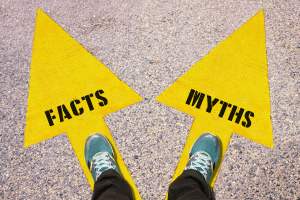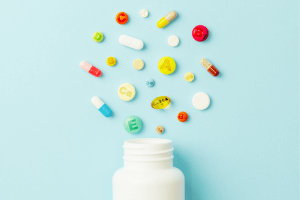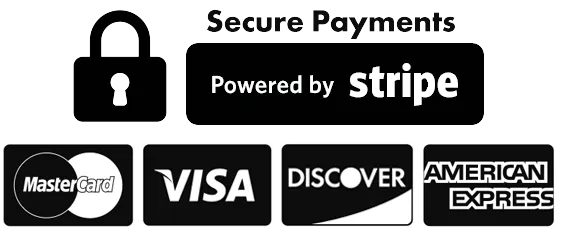Attention-deficit/Hyperactivity Disorder (ADHD) is a condition that can affect around seven to eight percent of all children, starting from around six years of age and it can also persist all through adulthood. While there is no known cure for ADHD, most current treatments are either prescription medications (primarily stimulants) or non-prescribed alternatives to drugs for ADHD. Both are meant to control the disorder’s symptoms (not the cause) as much as possible to allow a person to lead an everyday life. 
The primary treatments are:
- Prescription medications
- Dietary supplements as alternatives to drugs for ADHD
- Personal interventions
It’s widely accepted that there’s no absolute cure for ADHD. According to Additude, one of the most comprehensive websites focusing on ADHD, currently in the US, around three-quarters of children with ADHD undergo some type of treatment. Around a third receive a combination of behavioral therapies together with medication. Around the same number receive only medication, and about one-half of that number undergo only behavioral therapies. The remainder either use alternatives to drugs for ADHD, or run the risks that come from not treating the condition.
In another article here, we focused on the types of treatments that require prescription medications that have to come via healthcare providers. In this article, we focus on the other ways of handling the symptoms of ADHD, including adjusting food intake to boost important nutrition needs and behavioral therapy.
Dietary supplements can address brain chemical deficiencies as an alternative to drugs for ADHD.
Research has shown that a common factor in people with symptoms of ADHD is a deficiency in some essential organic substances like omega-3 fatty acids and metals like iron, zinc, and magnesium. Omega-3s boost the body’s dopamine synthesis, the same neurotransmitter many ADHD medications also target. Scientists still don’t know the exact mechanism that makes omega-3s improve brain function, but it’s clear that they’re critical for memory, cognition, and focus.
Which are the most widely prescribed dietary supplements for treating ADHD?
The human body doesn’t make omega-3s independently, so it must get these essential nutrients through everyday food or supplementation. Several foods are rich in polyunsaturated fatty acids (PUFAs), essential building blocks for omega-3. These include cold-water fatty fish, such as salmon, mackerel, tuna, herring, sardines, walnuts, and flaxseed, and plant oils, such as flaxseed, soybean, and canola oil. However, getting sufficient PUFAs in a regular diet is difficult, so increasingly, therapists recommend adding specially formulated supplements by taking the alternatives to drugs for ADHD will add the right combination of PUFAs and essential metals in an easy-to-take medication.
Zoomind combines two main types of omega-3 fatty acids: eicosapentaenoic acid (EPA) and docosahexaenoic acid (DHA). Experts have determined that the ratio of EPA to DHA (3:1) contained in Zoomind will better improve ADHD symptoms.
What are the main benefits coming from treating someone with a dietary supplement as an alternative to drugs for ADHD?
The most significant benefit of treating ADHD with a dietary supplement like Zoomind is the lack of any side effects, addiction, or drug interaction, which are always a risk associated with prescribed medications. Supplements are designed to add completely natural foods into a regular diet to supply some essential elements that are either missing from a person’s daily food intake or deficient in the body.
Another great benefit is the easy way they can be administered, either as an easy-to-take pill like Zoomind or as a powder to be sprinkled over other foods, like many other supplements.
Are there any negative features of treating ADHD with a dietary supplement?
There are few known side effects. Very high doses of omega-3s may cause nausea, diarrhea, and other gastrointestinal discomforts, but this can only result from taking far more than recommended doses.
The main negative feature of supplements like Zoomind is that it may take patients with ADHD up to six weeks to see the benefits, so it’s important to be patient and give it time to work.
Personal interventions
There are a few treatments that use person-to-person interactions with specially trained professionals. These are mainly designed to teach a person with ADHD how best to handle the disorder’s behavioral aspects and allow them to lead normal lives.
Which are the most widely used personal interventions for treating ADHD?
The methods most widely used are behavioral therapy and skills training.
Behavioral therapy: treating ADHD via parent training in behavior management, social skills training, classroom behavioral interventions, and individual counseling. Techniques such as positive reinforcement, time-out, token economy systems, and setting clear expectations and consequences are often used to help modify behaviors and improve functioning.
Skills training: includes teaching time management, organization, planning, and problem-solving skills. This approach often involves breaking tasks into smaller steps, using visual aids, and establishing routines to help individuals manage their daily lives more effectively.
What are the main positive features of the treatment of ADHD with a personal intervention?
The main positive aspects of treatment with behavioral therapy for ADHD include developing healthy coping strategies, improved self-esteem and self-regulation, decreased disruptive behaviors and enhanced social and communication skills. Behavioral therapy can also help to address co-existing issues such as anxiety or oppositional behaviors.
The main positive aspects of treatment with skills training for ADHD include improved academic and work performance, increased self-reliance and independence, better decision-making abilities, and reduced stress and frustration. Skills training can also empower individuals by teaching them practical strategies to overcome their challenges.
Probably the greatest advantage of these interventions over prescription medication is that they have life-long effects, whereas oral medication only produces effects as long as they are being taken.
What are the main negative features of the treatment of ADHD with a personal intervention?
The main negative aspects of treatment with behavioral therapy and skills training for people with ADHD are that it may require more time and effort to show significant improvements compared to medication, it may be less effective for some individuals, and the success of skills training often depends on the consistency and quality of the instruction. Additionally, access to skilled professionals or programs specialized in ADHD skills training can be limited and costly, making it unavailable for some people.

